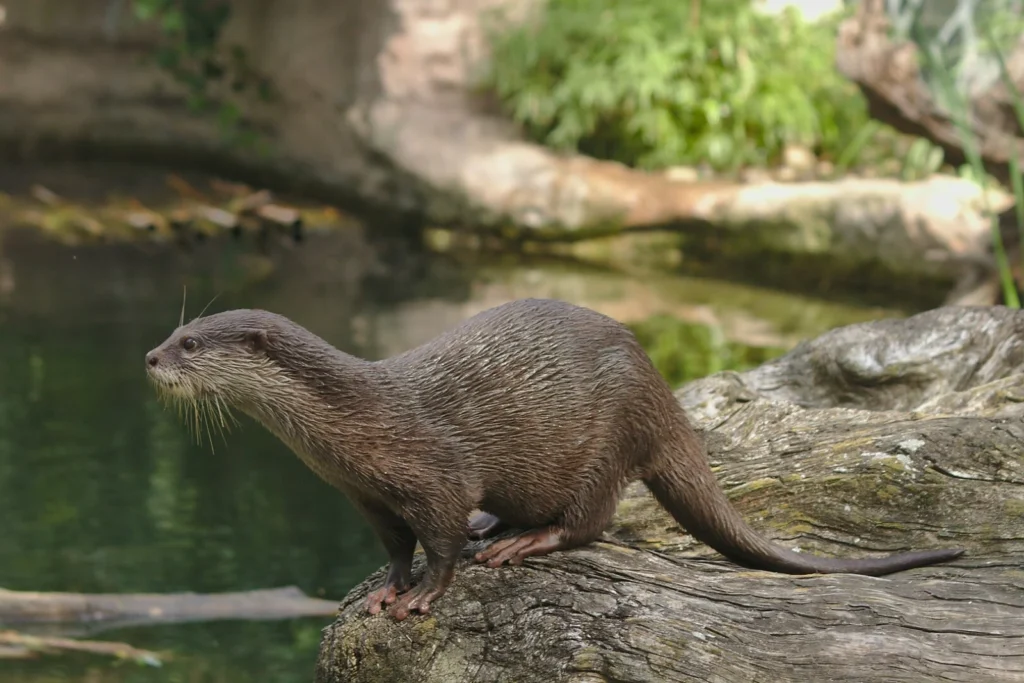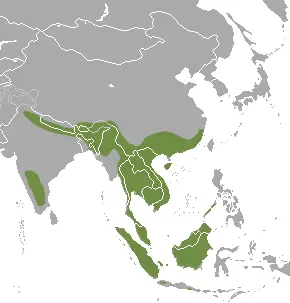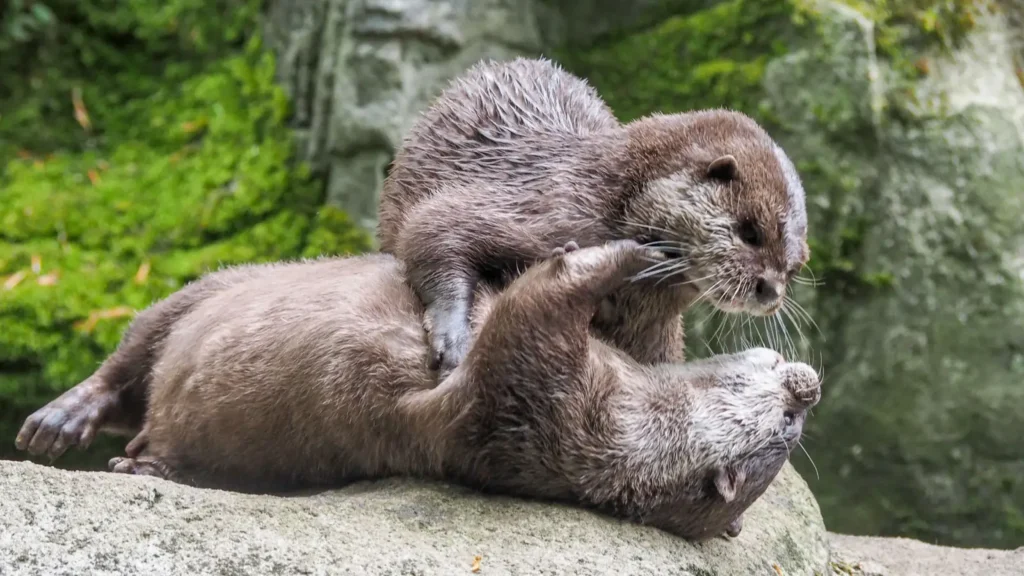Malayan otter (Aonyx cinereus), also known as small-clawed otter or Asian small-clawed otteris the smallest otter species in the world. It belongs to the marten family (Mustelidae) and stands out for its social behavior, intelligence, and impressive hunting skills.
This otter lives in freshwater and coastal ecosystems in Southeast Asia and is an important predator in its ecosystem. It is known for its playfulness as well as its unique paws, which have short claws that allow it to better feel and manipulate its food.

Classification and scientific name
• The Kingdom: Animals (Animalia)
• Type: Chordal (Chordata)
• Class: Mammals (Mammalia)
• Row: Predatory animals (Carnivora)
• Family: Martens (Mustelidae)
• Gender: Clawless otters (Aonyx)
• View: Malayan otter (Aonyx cinereus)
Physical characteristics
Dimensions and weight
📌 Body length: 40-65 cm
📌 Tail length: 25-35 cm
📌 Weight: 2.7-5.4 kg
This species is much smaller than other members of the otter family, such as Eurasian otter (Lutra lutra) or Giant river otter (Pteronura brasiliensis).
Color and fur
✔ Main coat color: from light brown to dark brown
✔ Abdominal part: slightly lighter than the back
✔ Head and muzzle: characteristic white spots around the nose, eyes and throat
✔ Fur: thick, waterproof, retains heat well

Range and habitat
🔵 Spread
The Malayan otter is found in the following countries:
• India
• Nepal
• Bangladesh
• Myanmar
• Thailand
• Laos
• Cambodia
• Vietnam
• Malaysia
• Indonesia (Sumatra, Java, Borneo, Bali, Sulawesi, Philippines)
🔴 Living environment
✔ Freshwater rivers and lakes
✔ Wetlands and mangrove forests
✔ Coastal lagoons and estuaries
✔ Rice fields and other irrigated areas
Malayan otters often live in areas where there is a lot of silt, sand, or clay, which makes it easier for them to hunt.
Lifestyle and behavior
🌟 Social structure
✅ They live in family groups of 4 to 15 individuals
✅ The dominant pair leads the pack
✅ Rarely lead a lonely lifestyle
🌟 Activity time
✅ Daytime or twilight predator
✅ Hunts mainly in the morning and evening
✅ He likes to play, run and swim in the water
🌟 Behavioral features
✔ High level intelligence and the ability to learn
✔ Communication through sounds, smells and gestures
✔ Mutual assistance in the care of offspring

Food and hunting
🍖 Omnivorousness with an emphasis on animal food
Malayan otter agile hunterwhich uses its front paws to catch prey.
✅ Basic foodstuffs:
✔ Fish (especially small freshwater species)
✔ Crustaceans (crabs, shrimps)
✔ Shellfish
✔ Frogs and amphibians
Insects
✔ Reptiles (lizards, small snakes)
Fruits, seeds
💡 Hunting methods
• Feeling the bottom with the paws in search of prey
• Using tricks for luring fish
• Breaking shells mollusks against hard objects
Reproduction and life cycle
❤️ Mating season: can last all year round, peaking in spring and summer
❤️ Pregnancy: 60-64 days
❤️ Number of children: 1-6, usually 2-3
❤️ Puberty: 1-2 years old
👶 Babies are born blind and helpless
👩👧 Parents actively care for their offspring
👨👩👦 The whole family helps in raising young animals
🧬 Life span: 8-12 years in the wild, up to 15 years in captivity.
Natural enemies and threats
🔴 Predatory animals
Eagles and large birds of prey
✔ Python snakes
✔ Water crocodiles

🔴 Threats from humans
✔ Loss of habitat due to deforestation
✔ Water pollution with plastic and heavy metals
✔ Hunting for fur and trade in exotic animals
✔ Conflicts with fishermen
Protected status and rescue efforts
🟢 Security status:
🔹 IUCN Red List – Vulnerable
🔹 Protected in national parks and reserves
🟢 Conservation measures:
✔ Control over poaching
✔ Cleaning water bodies from pollution
✔ Expansion of protected areas
Malayan otter in culture and captivity
🔹 In Japan and Indonesia, Malay otters are kept as pets.
🔹 They quickly tame and interact with people.
🔹 However, in many countries, keeping otters at home is prohibited due to the threat to the wild population.
Conclusion
Malayan otter (Aonyx cinereus) is an intelligent, social, and agile predator that plays an important role in aquatic ecosystems in Southeast Asia. Despite threats from humans, this otter has a high chance of survival due to its adaptability and conservation measures.
